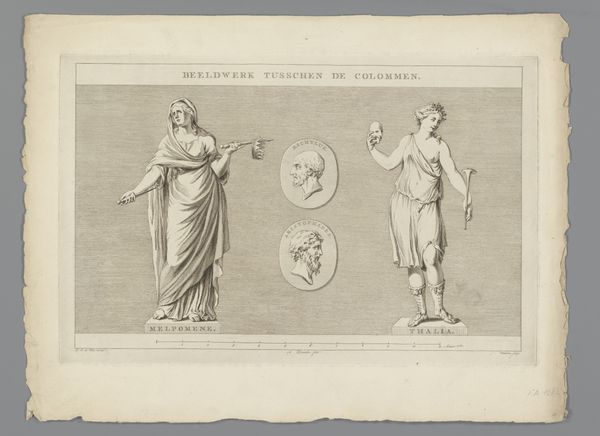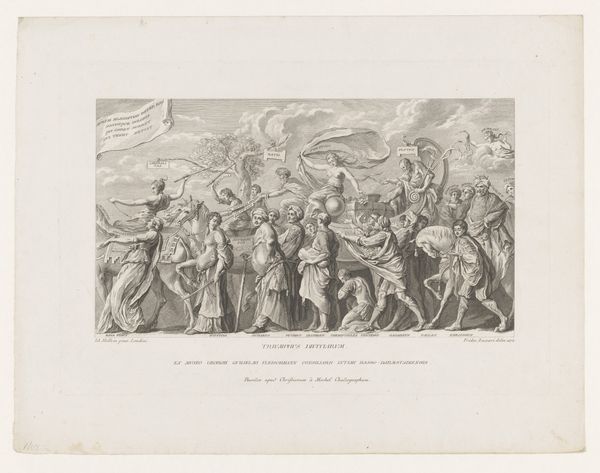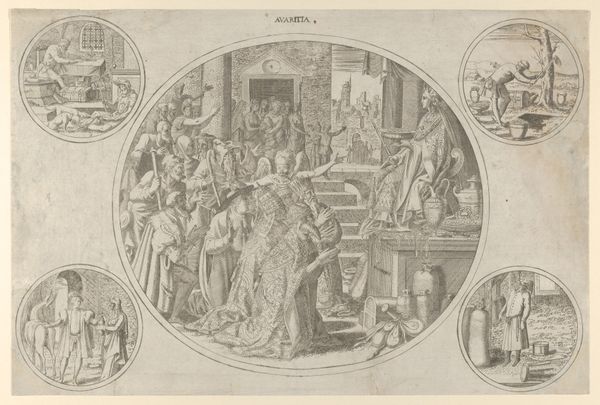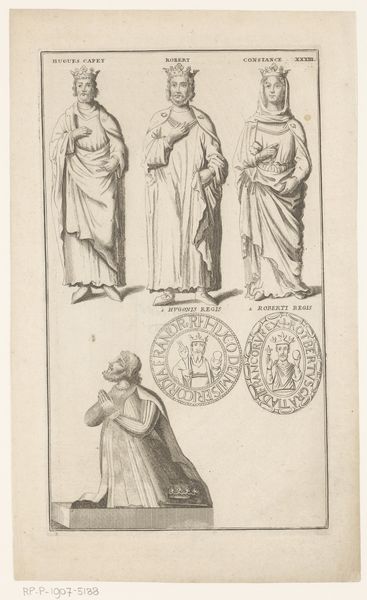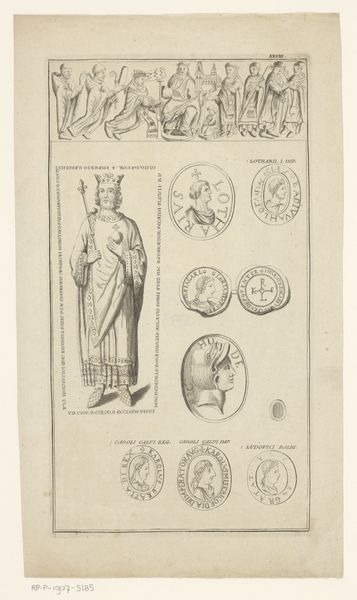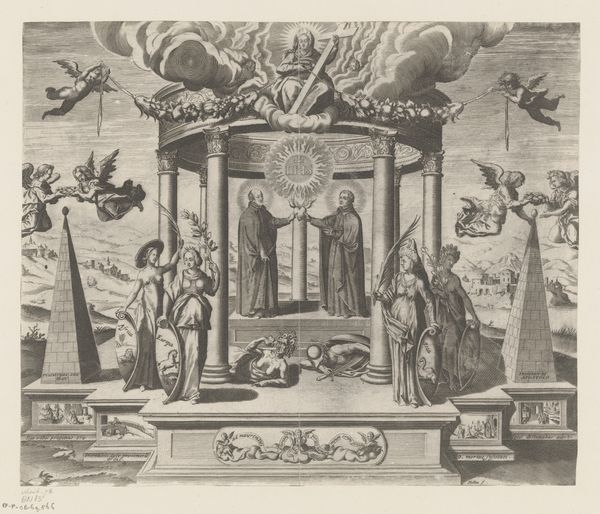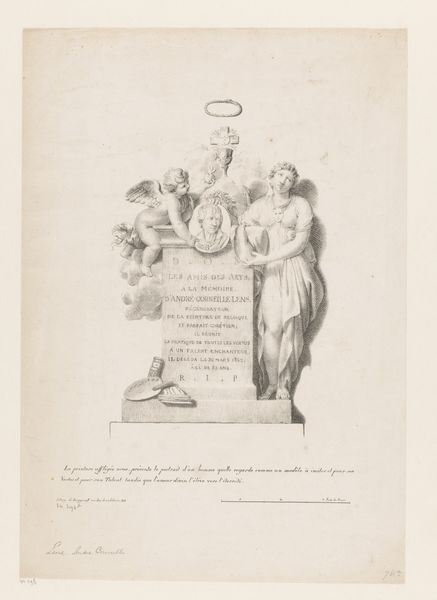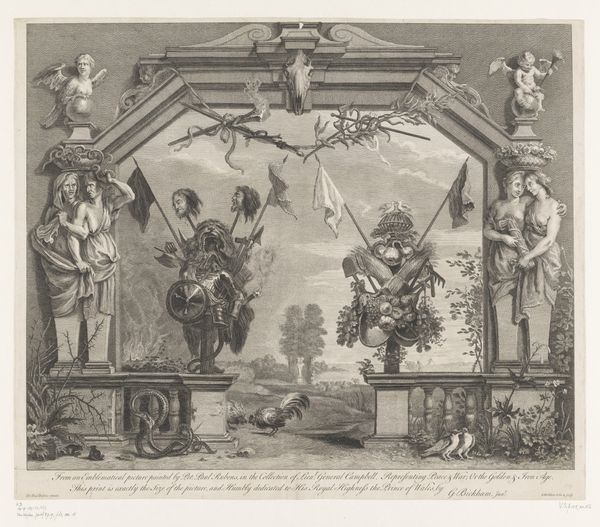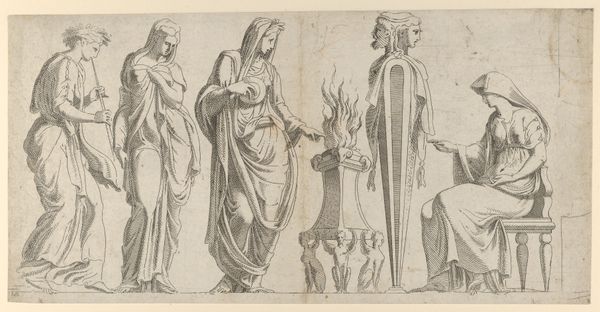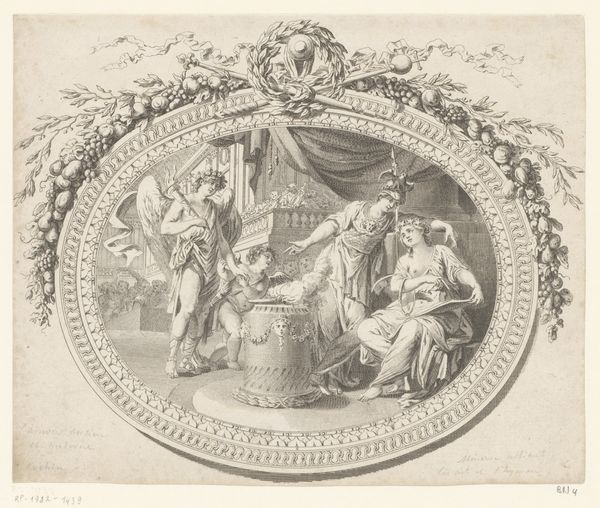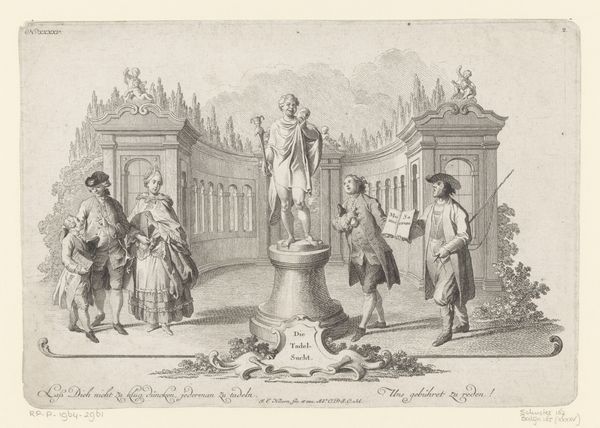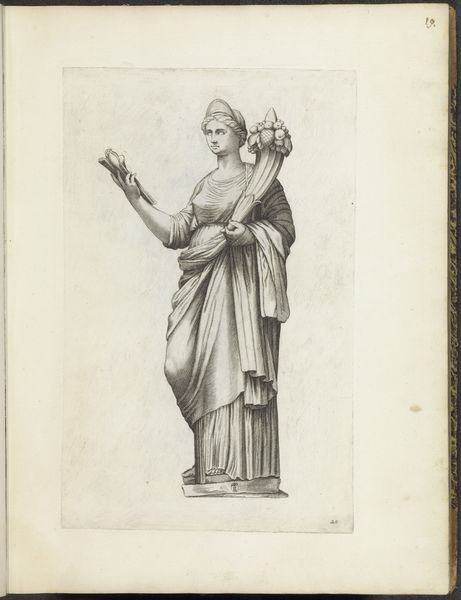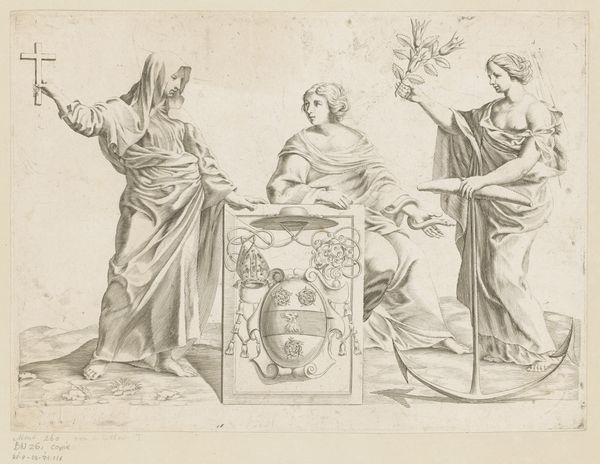
print, etching, engraving
#
neoclacissism
# print
#
etching
#
figuration
#
line
#
history-painting
#
engraving
Dimensions: 183 mm (height) x 231 mm (width) (bladmaal)
This is Andreas Flint’s engraving, "Corona Triumphalis og Virgo Vestalis", of indeterminate date. The composition is divided into two distinct, yet formally connected, areas. On the left, we see a series of meticulously rendered wreaths and crowns, each labeled and numbered, displaying a variety of forms and textures. These objects, emblems of triumph and civic virtue, draw the eye through their intricate detail and careful arrangement. To the right, Flint depicts a Vestal Virgin, rendered in the classical style. Her draped figure and outstretched hand directs our attention to the flame, a symbol of purity. The linear precision and stark contrast in Flint’s engraving invite a semiotic reading. The crowns signify power and status, while the Vestal Virgin represents duty and tradition. This symbolic structure isn't just about classical virtues, but a discourse on power, representation, and perhaps the societal roles of women during Flint's time. Note how the formal clarity challenges fixed meanings and invites ongoing re-interpretations.
Comments
No comments
Be the first to comment and join the conversation on the ultimate creative platform.
